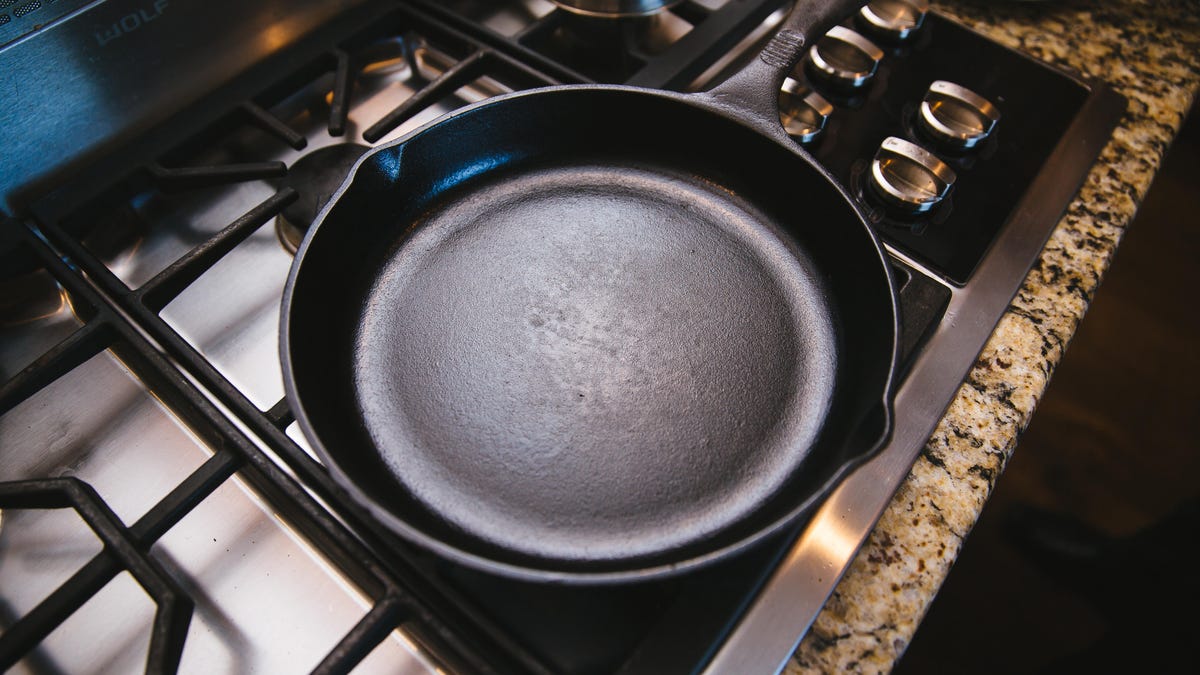The concept of how to season an enameled cast iron skillet may seem daunting, especially for kitchen professionals who rely on their tools to make culinary magic happen. Whether you're a chef in a bustling kitchen or a home cook looking to elevate your skills, learning the art of seasoning your skillet is a remarkable and necessary skill. In this exclusive guide, we will delve deeply into the world of enameled cast iron, providing you with unmissable insights and techniques that will transform your cooking experience.
An enameled cast iron skillet is a kitchen technology designed for durability and performance, but many professionals lack confidence in seasoning it correctly. Fear not, as this article is here to guide you through the process step-by-step. We'll share *shocking* truths about maintaining your skillet and answer common questions that arise in this process.

The Basics of Enameled Cast Iron
Before we dive into the details of how to season an enameled cast iron skillet, let's get acquainted with the unique properties of enameled cast iron. Unlike traditional cast iron, **enameled** surfaces boast a smooth and glossy exterior, making them resistant to rust and easier to clean. This does not mean, however, that they do not require care.
Understanding the differences in surface treatment is crucial for ensuring longevity and optimal cooking performance. Enameled cast iron skillets provide incredible heat retention and distribution, which is paramount for perfect searing and even cooking.
Why Season Your Skillet?
Seasoning is vital in enhancing the non-stick properties of your skillet. It not only helps to develop flavor over time but also prevents surface scratches. Furthermore, proper seasoning can add a layer of protection against chipped enamel. Over time, a well-seasoned enameled skillet becomes a cherished companion in the kitchen, earning its place in various recipes and traditions.
Step-by-Step Guide to Seasoning
Let's break down the process of how to season an enameled cast iron skillet into manageable steps that any kitchen professional can follow.
Step 1: Gather Your Supplies
To begin, you will need:
- High-smoke-point oil (e.g., grapeseed, canola, or avocado)
- Clean, soft cloths for cleaning and oil application
- Oven mitts or towels for handling hot cookware
- Aluminum foil to catch drips
Step 2: Clean Your Skillet
Before seasoning, ensure that your skillet is thoroughly clean. For more tips on cleaning your skillet, refer to this cleaning guide. Use a non-abrasive sponge and mild soap. Rinse and dry it completely to prepare for seasoning.
Step 3: Apply Oil
Apply a thin layer of your chosen oil to the surface of the skillet using a soft cloth or towel. Ensure you cover the entire skillet, including the sides. The oil is the essential ingredient that will create the seasoned layer.
Step 4: Bake Your Skillet
Preheat your oven to 350F (175C). Place your skillet upside down on the top rack. To protect your oven from any drips, use a piece of aluminum foil on the bottom rack. Bake for approximately one hour. This process allows the oil to polymerize, forming a protective coating.
Step 5: Let It Cool
Once the hour is up, turn off the oven and let your skillet cool inside. This will help maintain the seasoning. After cooling, your enameled cast iron skillet should have a smooth, non-sticky finish.
Maintenance Tips
To maintain your cast iron skillet's seasoning, avoid cooking acidic foods for the first few uses. Regularly clean the skillet with hot water and a soft sponge. If food sticks, revisit the seasoning process. You can find additional cleaning tips in this cleaning article.
Common Mistakes to Avoid
Even seasoned professionals can make mistakes. Here are some common pitfalls to avoid when seasoning your skillet:
- Overloading with oil A thin layer is key.
- Using the wrong oil Select high-smoking point oils.
- Not allowing it to cool properly after seasoning.
Frequently Asked Questions
Q1: Can I use regular cast iron seasoning techniques on enameled cast iron?
A1: No, traditional cast iron seasoning methods do not apply to enameled skillets as they are already coated with enamel.
Q2: How often should I season my enameled cast iron skillet?
A2: Season your skillet whenever you notice food sticking or if it appears dull. Typically, once every few months is sufficient.
Q3: Are there any specific cooking techniques to follow with enameled cast iron?
A3: Avoid cooking over high heat for extended periods and steer clear of metal utensils that may scratch the surface.
:max_bytes(150000):strip_icc()/ses-product-group-shot-rkilgore-87f90f93b4b34ec5afb38d5d75c6094b.jpeg)
Conclusion
In conclusion, knowing how to season an enameled cast iron skillet is essential for food enthusiasts and kitchen professionals alike. Following these steps will ensure your skillet remains a dependable cooking companion, enhancing all your culinary endeavors. For more fantastic insights and tips, check out this cleaning and seasoning guide.
As an Amazon Associate, I earn from qualifying purchases.






Leave a comment
This site is protected by hCaptcha and the hCaptcha Privacy Policy and Terms of Service apply.